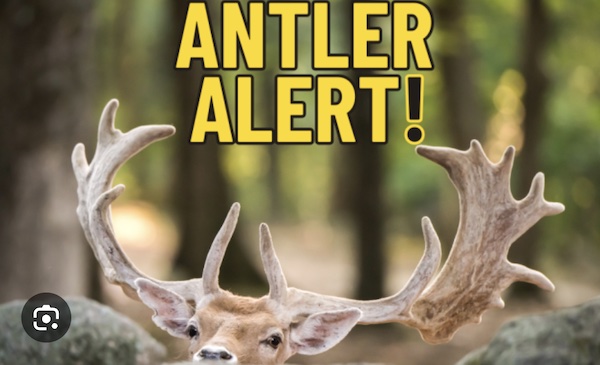Yearly ‘Antler Alert’ Reminds Kentuckians To Drive Safely and Watch for Deer
3,228 highway crashes with deer were reported to police in 2023
FRANKFORT, Ky. (Oct. 11, 2024) – To promote safer highways, the Kentucky Transportation Cabinet (KYTC) is reminding motorists to watch out for deer and other wildlife on roadways this fall and winter as state transportation officials issue the annual Antler Alert. Nearly half of all deer collisions occur during the last three months of the year.
“Crashes involving large animals tend to increase from October through December,” said KYTC State Highway Engineer James Ballinger. “Increased movement by deer and reduced visibility on roadways, especially between dawn and dusk, can create hazardous driving conditions. That’s why we take time out each year to remind motorists to wear their seatbelt, eliminate distractions, and take other precautions when animals are on the move.”
According to Joe McDermott, deer program coordinator with the Kentucky Department of Fish and Wildlife Resources (KDFWR), deer are roaming more right now because it is their mating season, or rut. Fall’s shorter days and cooler nights put deer on the move, as do crop harvesting activities.
“Motorists should be extra cautious in the early morning and late evening hours when deer are going to be most active as they search for food and for mates during the rut,” McDermott said. “Collisions with deer will be more likely through December as the rut will make bucks focus only on chasing does, oblivious to most everything else, including traffic.”
In Kentucky, 3,228 highway crashes where a vehicle struck a deer were reported in 2023, up nearly 150 over the previous year and the highest recorded in the last five years. There were three reported fatalities – one fewer than last year – and 30 serious injuries, which was an increase over last year.
Of the total crashes, 126 occurred in Hopkins County – more than in any other county. Also in the top 10 are Boone County (121 crashes), Hardin County (106), Henderson County (97), Christian County (96), Pulaski County (93), Warren County (87), Campbell County (84), Muhlenberg County (84) and Barren County (68).
State Farm Mutual Automobile Insurance Co. issues a yearly report of collisions involving deer and other wildlife based on insurance claims. For the year ending June 30, 2024, State Farm reported more than 1.8 million animal collision claims in the United States, of which 1.3 million involved deer.
On average, U.S. drivers have a 1 in 128 chance of a collision with an animal. Kentucky ranks above the national average at 1 chance in 98. Drivers in neighboring West Virginia face the highest risk – 1 in 40, according to State Farm. (View the report here.)
The Transportation Cabinet offers these driving tips to help improve safety:
- Stay Aware: Be vigilant, especially in forested terrain, and during dusk and dawn when deer are most active.
- Be Prepared: Always wear a seat belt (it’s the law) and eliminate distractions (phones down!).
- Headlights On: Keep them on bright unless other vehicles are approaching.
- Foot off the Gas: Slow down immediately if you spot a deer crossing the roadway; they tend to travel in groups.
- Don’t Swerve: Trying to avoid a deer can result in a more serious crash with an oncoming vehicle or roadside object.
- If There’s a Crash: Keep both hands on the wheel and apply brakes steadily until stopped.
Kentuckians should drive defensively, constantly scanning the roadside, especially at sunrise and sunset when deer are most active. Motorists are asked to report all deer-vehicle collisions to police. KYTC traffic engineers use the crash data to aid in placing deer-crossing warning signs and other safety measures.
In addition, KYTC is partnering this year with the KDFWR to study wildlife-vehicle collisions in Kentucky as one of 17 states to receive a federal grant aimed at making roadways safer for people and wildlife. The $1.2 million award will fund a wildlife-vehicle collision reduction plan and a pilot study in central Kentucky to identify links between wildlife crashes and environmental factors.
















